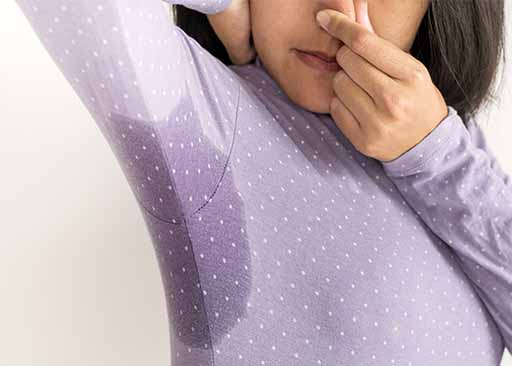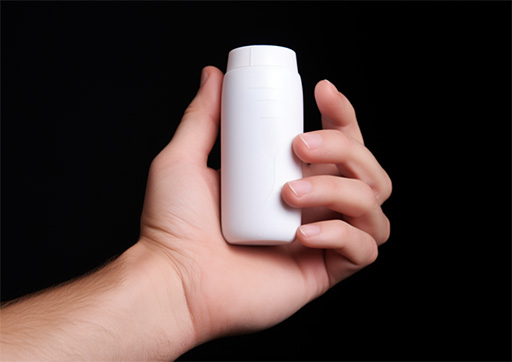What To Know About Eccrine Sweat Glands
 Sweating is a natural process that helps regulate temperature. Eccrine sweat glands are activated in hot and cold conditions when the body cools down or is heated up. These glands produce sweat which evaporates from the skin surface, creating cooling effects in humid conditions and warming in dry conditions.
Sweating is a natural process that helps regulate temperature. Eccrine sweat glands are activated in hot and cold conditions when the body cools down or is heated up. These glands produce sweat which evaporates from the skin surface, creating cooling effects in humid conditions and warming in dry conditions.
Apocrine vs. Eccrine Sweat Glands
– Eccrine glands, which can generate more than 2 quarts of sweat per day.
– Apocrine sweat glands, located only in certain parts, have a thick, denser, and fatty secretion. This secreted substance is released during puberty or when an individual is experiencing notable emotionals.
How Eccrine Sweat Glands Cool
In addition to being a protective layer against hazards and harmful bacteria, it is also responsible for maintaining temperature within a healthy range. Depending upon environmental conditions and other factors such as exercise, the body needs different strategies for temperature regulation.
Eccrine Glands and Sweat
There are about 3 million sweat glands in humans, but up to 50% of those are eccrine glands. There could be up to 1.5 million in a human, with most eccrine sweat gland locations on the soles of the feet, palms of the hands, and the forehead.
These glands produce a clear fluid composed primarily of water with small amounts of ions and other electrolytes. The fluid from the eccrine glands is known as sweat. The sweat typically contains 99% water and 1-2% solutes, creating a hypotonic solution.
The internal environment of a human likes to be around 98° F (36°C). Since the purpose of this is to cool the body, eccrine glands are activated in hot and cooler areas. These glands sweat which evaporates from the skin, creating cooling effects in humid areas and warming effects in dry conditions.
The human body regulates its temperature primarily through the evaporation of sweat on the skin. The sweat also contains small amounts of urea, lactic acid, and uric acid. These are the primary components in sweat odor. One eccrine sweat gland function is to create something comparable to body fluids which help to create this effect when it evaporates into the air.
Most people will sweat when the skin temperature reaches about 86° F (30°C). The sweat is completely odorless until it meets bacteria on the skin. It breaks down substances in the sweat that emit an unpleasant smell.
The amount that someone sweats can vary based on medical genetics, age, sex, exercise intensity, and even psychological factors. When these glands activate, they can make between 0.5 to 2 liters of sweat per hour on average.
Eccrine Sweat Gland Infection
Since these gland types release such a large amount of liquid, they are susceptible to infection by microorganisms, including fungi. It is most common when the eccrine glands are blocked or unable to function correctly. If this occurs in just one part of the skin, it can be uncomfortable and even painful with redness, swelling, warmth, and itching. These are signs of inflammation.
If eccrine sweat glands get blocked, it can lead to severe infection. It can result in swollen bumps under the skin, which develop in response to external triggers like heat and sweat. These bumps appear on areas covered by clothing, especially areas where the skin is in close contact with other skin.
It usually starts with just one gland then spreads to others in that same area. Once they become infected, they can swell and produce a yellow or white discharge. If fungus skin infections cause the issue, it will crack the skin creating a burning sensation over time. Eccrine sweat gland infection requires addressing the source and any discomfort and pain experienced from it.
Other Factors
Some other conditions can also be related to the overproduction of sweat. These include:
Hyperhidrosis: This is excessive sweating beyond what is needed for normal temperature regulation. In most cases, this will affect the entire body, but it can just affect one part such as the hands, feet, face, or armpits in some circumstances. Many triggers can make this worse, including stress and warmer weather. Hyperhidrosis can also occur at random times throughout the day.
Obesity: While obesity is a problem through its related health issues, it can also cause sweating. The mass in obese people tends to increase exponentially and significantly adds to their heat production.
The Nervous System: Injuries can also cause excessive sweating. These include the nervous system either by affecting its structure or causing it to work ineffectively. In these cases, the sweat glands are working correctly, but there is interference with their brain communication.
Alcohol: Alcohol consumption can also contribute to sweating. Alcohol directly increases the activity of eccrine sweat glands and triggers adrenaline production, making this worse.

Hyperthermia: This means that the core body temperature elevates beyond its normal ranges. It is usually the result of exposure to extreme heat, but some medications are related to this.
Medications: Many of these can also cause sweating. If your patients have noticed sweating enough to become concerned with their medicine, observe, and monitor them for other effects. Please coordinate with your patient’s other healthcare providers to ensure they maintain care while minimizing sweating.
Stress: Stress of any kind – physical, mental, or emotional – can also increase the core body temperature and trigger sweating. Stress-induced sweat may be the cause of significant discomfort. When assessing patient sweating, please take note of any other factors that may be related so you can provide them with better care.
Take Action

Antiperspirants/Deodorants – It is one of the most common methods to combat sweating. Essentially, it works by using ingredients that interrupt or obstruct glands’ ability to sweat. While this is very effective, not everyone can use this option. Deodorants will only help to eliminate unpleasant smells caused by sweat but will not prevent sweating entirely.
Warm Clothing – For those who have problems with heat-producing situations such as obesity, warming clothing can be a great choice. It is because they actively help to retain heat. Warming clothing usually comes as a full-body suit or an undershirt which you wear over your clothes.
Surgical Options – When all other protocols have failed, surgery may be the most reliable option available. It usually means removing some of the skin surface or sweat glands. Surgery is the most aggressive option, so you must ensure that your patient can handle the risks involved. It may also cause scarring, which will affect how sweat glands work in the future.
Endoscopic Thoracic Sympathectomy (ETS) – A surgical procedure that interrupts signals from the brain to sweat glands. You can choose this for those who have hyperhidrosis in just one clinical area. This procedure is for patients who have excessively sweaty hands and feet while showing no signs of hyperhidrosis.
Quick Assessment Using BioScan
Everyone sweats. It is a natural and necessary process we use to cool down when it starts to overheat. Sweating can also be used as a way to heat up if it becomes too cold. When an individual’s eccrine sweat glands are not functioning correctly, they may experience sweating or other side effects which make them uncomfortable in their skin.
If you want to help your patients who suffer from eccrine gland issues, you need to learn how proper assessment can lead to better care options that will stop their suffering while reducing healthcare costs. The first step in assessing eccrine gland issues is understanding what causes them.
A thorough understanding of how the one reacts to various stressors is the best way to move forward. Good quality healthcare includes performing a comprehensive evaluation quickly and efficiently using a tool that provides you with all necessary information. If possible, stick with non-invasive testing procedures, as they are less risky for those who are already struggling with uncomfortable symptoms.
BioScan is a modern, non-invasive method that you can use to assess and test the typical responses to stressors. Cleared by the USA FDA, it uses a state-of-the-art GRS (galvanic skin response) system that is fully portable and can be operated even outside your clinic. It is small enough to fit in a small laptop roller bag.
Setting up the device takes only a few minutes and can be used in multiple locations such as clinics, homes, and workplaces. The BioScan pairs with a software application installed on your computer or laptop. It will present a detailed report and graph so you can use it to plan an effective regimen for your patient’s.
